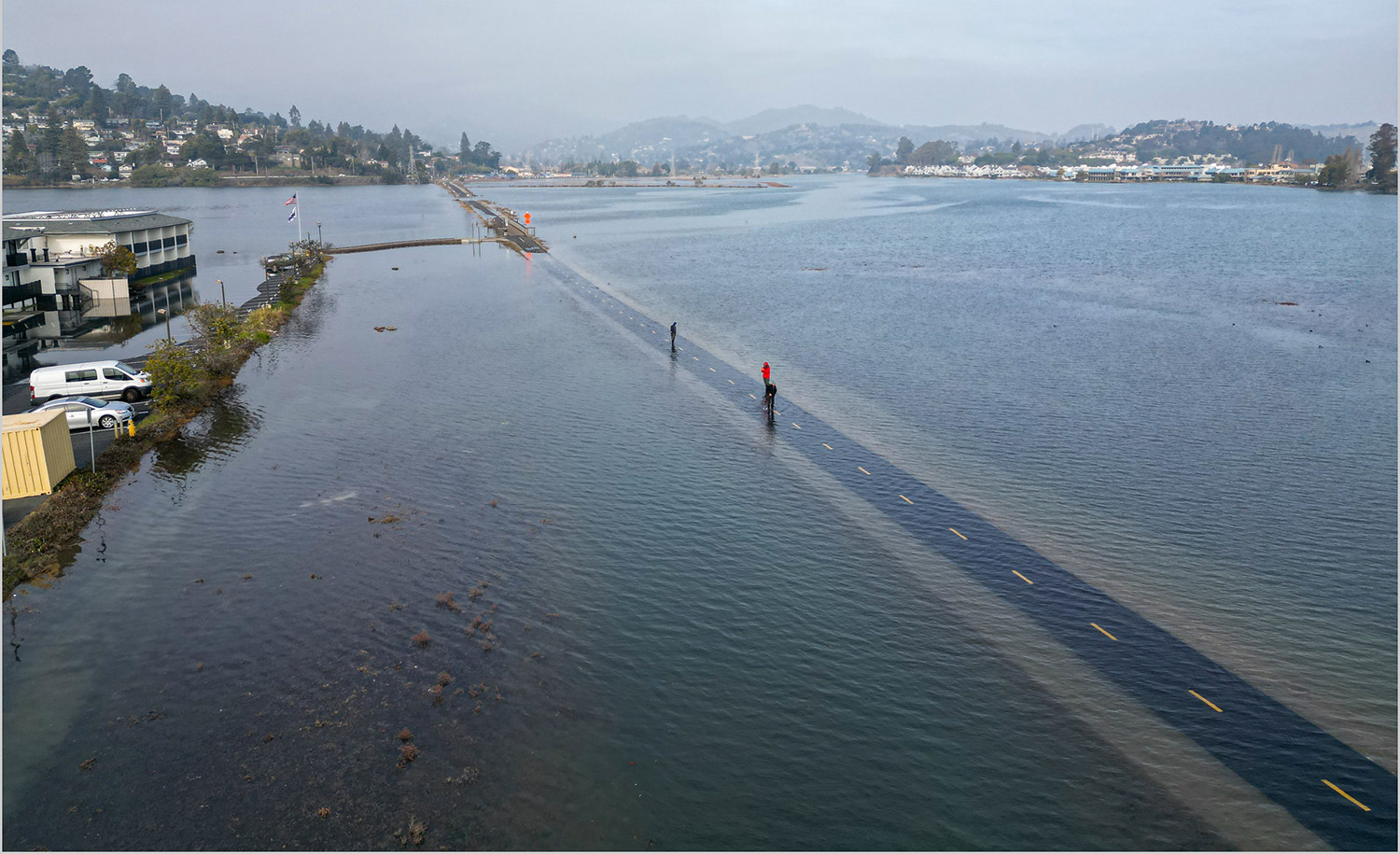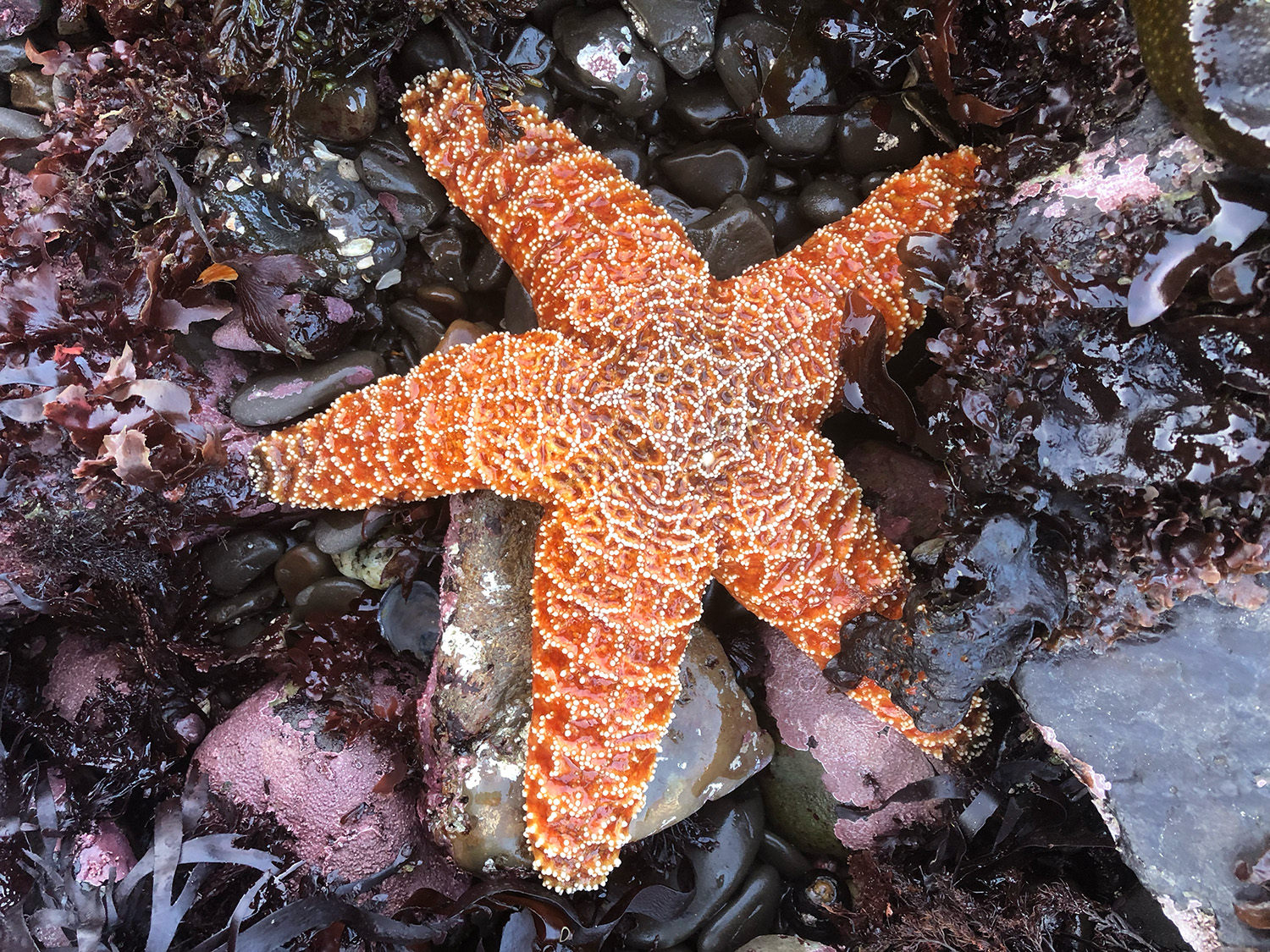It will be a weekend of coastal extremes.
At low tide, look out for sparkling feather boa kelp or flamboyant sea slugs, a menagerie of intertidal or even subtidal critters. Seven hours later, the tides will surge up over seven feet—about two feet higher than regular high tide—submerging Marin County’s Mill Valley section of the Bay Trail and lapping up onto parts of the Embarcadero, San Francisco’s Bay-facing esplanade.
Such is the king tide—the greatest tidal range of the year. The California coast will see its highest highs and lowest lows this weekend, January 21 and 22.
King tide isn’t a scientific term. “It’s a catchy phrase that was coined in Australia to describe the highest high tides of the year,” says Annie Frankel, statewide manager of the California King Tides project, part of the California Coastal Commission.
In San Francisco Bay, typical new moon tides range between 5 and 8 feet, but king tides expand the range to as much as 7 to 10 feet. This year’s king tides are predicted to reach lows at nearly -2 feet and highs over 7 feet.
We might need to get used to it.
“As sea levels rise a little higher, we’re going to be seeing those king tide elevations today happening a few more times a year,” says Ellen Plane, an environmental scientist specializing in sea-level-rise adaptation at the San Francisco Estuary Institute. “Eventually, those king tides are going to be our average daily high tides.”
Tide predictions for Ocean Beach, San Francisco
| Date | High tide (ft) | Time | Low tide (ft) | Time |
| Fri, Jan. 20 | 5.0 | 11:00 pm | -1.6 | 3:53 pm |
| 7.1 | 8:33 am | 3.2 | 2:35 am | |
| Sat, Jan. 21 | 5.2 | 11:41 pm | -1.8 | 4:40 pm |
| 7.2 | 9:26 am | 3.0 | 3:30 am | |
| Sun, Jan. 22 | 7.1 | 10:19 am | 2.7 | 4:24 am |
| -1.7 | 5:25 pm |

Why king tides happen
King tides are predictable. They arise from the gravitational dance among the sun, Earth, and moon. The sun and moon both tug on the Earth’s oceans to create tides, but because the moon is closer, its gravitational pull is about twice as powerful.
When three astronomical events transpire simultaneously, we get a king tide. Usually, it happens in December or January.
First, there’s a new moon. During a new moon, the Earth, moon and sun are all aligned, with the moon sandwiched between the sun and the Earth. During this alignment, Earth’s oceans are pulled by the combined gravitational pull of both the sun and the moon on the same side.
Second, the moon is closest to the Earth in its monthly orbit.
Third, the Earth is at the closest point in its orbit to the sun, a time known as perihelion. This happens in winter, and it increases the sun’s influence on the tides.
Imagining sea level rise
As polar glaciers melt, San Francisco is predicted to see sea levels rise from one to three feet by 2050 compared to averages from the year 2000, according to a 2018 California Sea Level Rise Guidance report. Storm surges and extreme rainfall events could make it even higher. The Pacific Ocean will flood wetlands, roads and other low-lying coastal areas.
“The way sea level rise really will be felt is in these intermittent events of extra high tides and storms causing flooding, as opposed to a slow thing that creeps up on you,” says Plane.
While king tides are a natural phenomenon unrelated to climate change, they can make that future much easier to imagine, says Frankel at the California King Tides Project.
“Photographing today’s extreme high tides gives us a window into the everyday water level of the future,” Frankel says.

See the king tides
Since 2010, the California King Tides Project has asked community members to upload their photos of shorelines at these extreme tides and share them as data. The photos help document flooding and verify local models of sea level rise.
This year, the highest tides will peak around 10:30 am on Saturday, January 21, and 11:30 am on Sunday, January 22, in San Francisco, with regional variations that you can look up for your area on tide charts. It’s a special opportunity––these extreme tides don’t always happen during daylight hours.
To contribute to the project safely, tread carefully on slippery rocks and stay back from big waves. Keep your distance from seabirds taking shelter above the tide line, and never turn your back to the ocean. Photos can be uploaded to the King Tides Project map and shared on social media with #kingtides.
Or, to witness a different kind of extreme, venture out at low tide to see the tide-pool critters. This year, the minus tides will bottom out at around 5 pm on Saturday and 6 pm on Sunday in San Francisco (again, check regional variations on tide charts).
Exceptionally low king tides expose rocky outcroppings further into the ocean, creating more tide pools than usual. This allows a unique peek at coastal creatures that usually live beneath the waves, such as crusty sea stars, riots of anemones, menageries of sponges and sea slugs, and—if you’re very lucky—perhaps even a young giant Pacific octopus.

King tide events this weekend (and some tide-pooling tips)
King Tide community events this weekend on Bay Nature’s calendar
From the Bay Nature archives:
• Where to Go Tide Pooling in the Bay Area and Beyond





